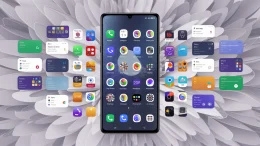
HTML5 Relevance
These days any time you talk mobile app development or operating systems, HTML5 is a key part of the conversation.
Perhaps the biggest development for HTML5 in 2012 was its non-development. At the end of 2011, HTML5 seemed like a young athlete that had no limits to its potential. Yet, just as we watch many athletes mature into professional players, the development was marred by maturation and performance issues that took some of the luster off the subject. From a technological standpoint, the HTML5 stack saw good improvement in 2012 as companies like Google, Mozilla, appMobi, Sencha, Research In Motion, Facebook and others have developed towards the stack. HTML5 is well on its way to being a mature technology.

Yet, HTML5 may have suffered a blow to its popularity and perception in 2012. One of HTML5’s biggest proponents was Facebook, which built its “native” apps for iOS, Android and other platforms by taking its Facebook mobile site and “wrapping” it for the native platforms. It was essentially a Web-based approach that lent itself to HTML5 proponents version of the future success of the stack. In the middle of the year, Facebook completely redid its mobile app for iOS, going towards native code and for its iPhone app. Like it or not, Facebook is a big influence among developers and is closely watched for the decisions it makes. When Facebook says it has gone native to increase performance and improve the user interface of its app, people take note. Hence, many HTML5 proponents changed their tune and said that, while HTML5 has its uses, it still is not ready for the primetime.
Location, Location, Location
The use of location services, social games and maps in smartphones has been something of a useful curiosity in the Mobile Revolution. People may like to use Foursquare and Google Maps on their phones, but ultimately they are just tools to inform you or entertain you. In 2012, location took on a much wider breadth of functionality in the mobile market.

Location features in smartphones had several interesting storylines in 2012. In the beginning of the year we saw an interesting fad of “ambient location apps” for locating people near you such as Highlight, Glancee and Banjo. This trend moves away from the simple Foursquare-style check-in but ultimately these types of services are more of an edge-case, first-adopter market than anything that will seriously penetrate the mass market.
Perhaps the biggest story of the year in the mobile location department was the act by Apple to drop Google Maps from its iPhones and iPads in iOS 6. Apple was then roundly criticized for releasing a half-baked product prone to errors. Apple has been working hard to fix those problems and eventually iOS Maps may be a quality product to rival Google Maps. Yet it was very telling that when Google released its own Maps for iOS app in middle December, it immediately became one of the most popular free apps in the App Store. People still like (and trust) Google Maps.
The seeds for smarter location services in smartphones was planted in several ways in 2012. Companies like Geoloqi out of Portland, Ore. are attempting to create low battery consumption services for background location that application developers and enterprises (like government agencies) can implant into their own services to keep track of employees or the retail shopping habits of consumers. Games are starting to implement location in an alternate/augmented reality layer, such as with Google’s Ingress app or TapCity from Boston-based TapLabs.
Location will become a much more ubiquitous feature in smartphones and tablets going forward. It may also become less visible as apps and services employ location behind the scenes to learn user patterns and tailor their mobile experience to how users move through the world. The key to that will be to create location services that have lower battery usage while also remaining highly accurate.
Growing Base Of Developer Services
We noted in the Mobile Trends for 2012 that an app explosion has gripped the mobile industry. Everybody is making an app, in one form or another.
It was inevitable then that and entire industry would emerge dedicated to the support of app developers. In 2012, we saw the cream rise to the top as some of the services that help developers create apps have cemented their positions in the mobile industry.
From a tools and services standpoints, two big companies have created significant pushes into the mobile services department, with IBM and SAP both offering multi-pronged service features targeted at both consumer app developers and enterprises. Microsoft has made a big push to get developers to use its Azure cloud service as the de facto back end for apps. Adobe, Brightcove and other publically traded companies have made big bets that they can provide much-needed services to app developers and designers.

Some of the most interesting momentum in the developer services space has come from rapidly growing startups. Analytics companies like Flurry, Localytics, Apsalar, PlayHaven and others are vying to be the default tracking platform for a variety of apps. Tools companies like appMobi, Sencha working to create workable features for mobile HTML5 developers while Appcelerator has cemented itself as a go-to destination for tools and developer support. Several “backend as a service” companies have solidified leads to help developers tie their apps to cloud infrastructure with StackMob, Parse and Kinvey leading the way. The list of developer-focused, service-oriented startups is very long and it is only going to grow as more and more people look to create apps for a variety of platforms and the Web.
Think of it in the same way you might think of what kinds of mobile apps you may be looking for. If you want recipes, there are hundreds of recipe apps. Shopping? Sure. Communication? Productivity? Maps? Calendars? Yeah, we got all of those. As developers create more and better apps, the services industry will grown underneath it to prop it up. Think of anything that an app developer might need, and there will be a dozen startups and several billion-dollar big boys lining up to provide those services. Marketing, advertising, integrated developer environments, cloud services, user interface and consulting, communications … you name it and a shadow industry that consumers may never see or care about is growing to serve developers.

















